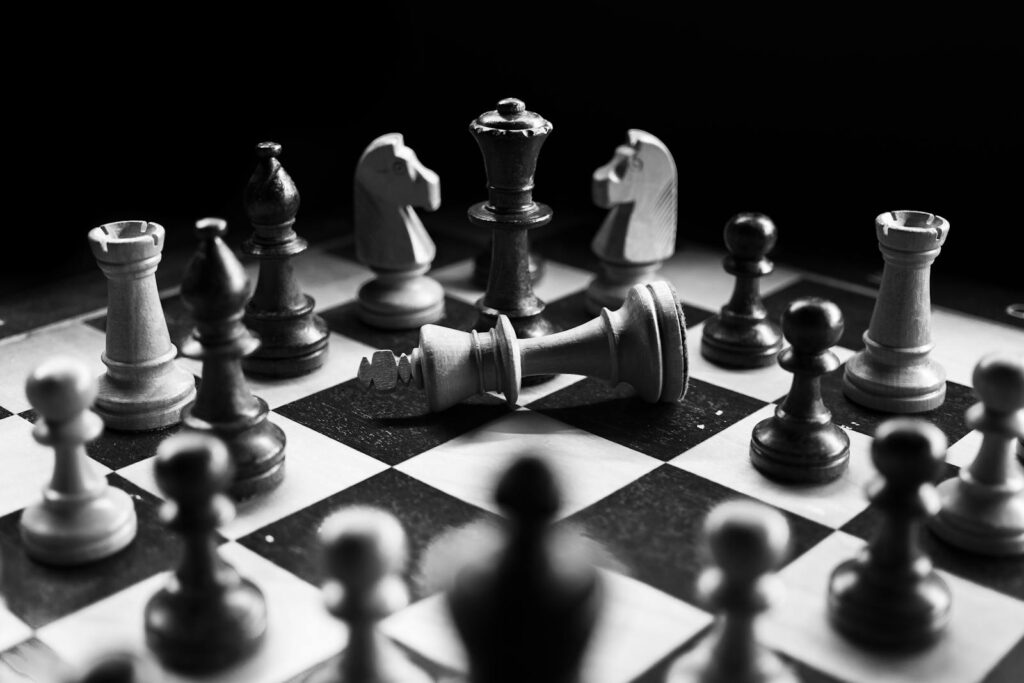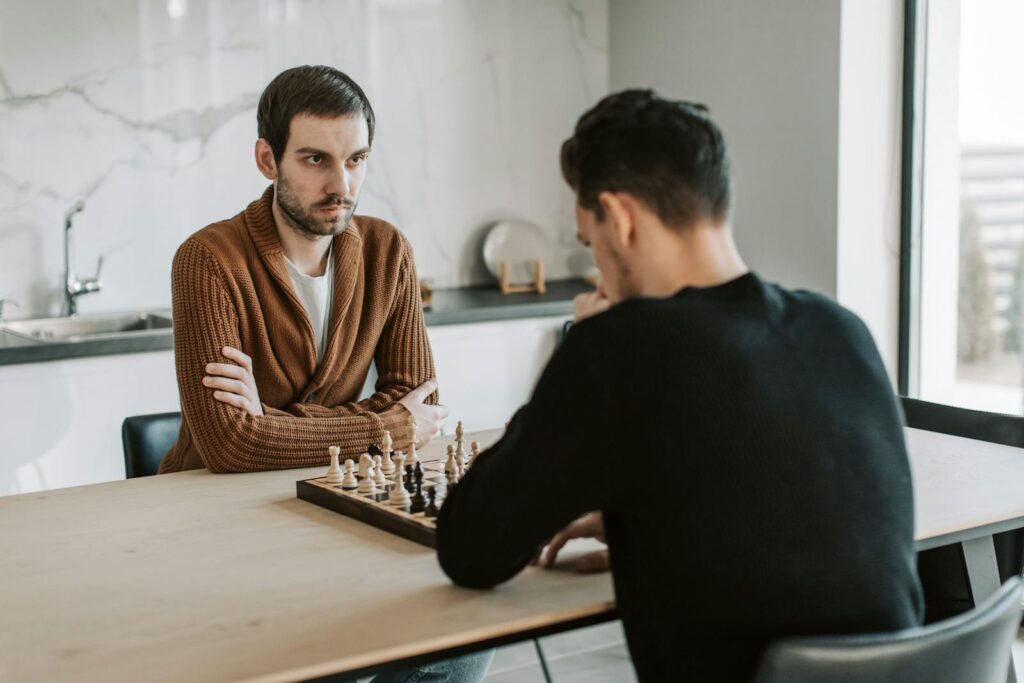Chess is a fascinating and intricate game that combines strategy, skill, and a bit of luck. Whether you’re a beginner looking to learn the basics or an experienced player aiming to sharpen your skills, understanding chess can enhance your analytical thinking and entertainment.
Understanding Chess
Board Setup
Chess is played on a square board divided into 64 smaller squares, arranged in an 8×8 grid. Each player starts with 16 pieces: one king, one queen, two rooks, two knights, two bishops, and eight pawns. The board setup is symmetrical, and the square colors alternate between light and dark, which is crucial for setting up the pieces correctly.
| Rank/File | A | B | C | D | E | F | G | H |
|---|---|---|---|---|---|---|---|---|
| 8 | Rook (Black) | Knight (Black) | Bishop (Black) | Queen (Black) | King (Black) | Bishop (Black) | Knight (Black) | Rook (Black) |
| 7 | Pawn (Black) | Pawn (Black) | Pawn (Black) | Pawn (Black) | Pawn (Black) | Pawn (Black) | Pawn (Black) | Pawn (Black) |
| 6 | ||||||||
| 5 | ||||||||
| 4 | ||||||||
| 3 | ||||||||
| 2 | Pawn (White) | Pawn (White) | Pawn (White) | Pawn (White) | Pawn (White) | Pawn (White) | Pawn (White) | Pawn (White) |
| 1 | Rook (White) | Knight (White) | Bishop (White) | Queen (White) | King (White) | Bishop (White) | Knight (White) | Rook (White) |
Explanation:
- Ranks: The horizontal rows are called ranks and are numbered from 1 to 8, starting from the white side to the black side.
- Files: The vertical columns are called files and are labeled from A to H, starting from the left-hand side.
The pieces are arranged with the rooks on the corners, followed by the knights next to them, then the bishops, and the queen, who is placed on her own color (white queen on a white square and black queen on a black square). The king takes the remaining square next to the queen. The pawns are set up one row forward from the other pieces, on the second rank for white and the seventh rank for black.
How to Move the Pieces

- King: Moves one square in any direction. The king also has a special move called castling, done with a rook.
- Queen: Can move any number of squares along a row, column, or diagonal.
- Rook: Moves any number of squares along a row or column.
- Bishop: Moves any number of squares diagonally.
- Knight: Moves in an “L” shape: two squares in one direction and then one more square at a 90-degree angle.
- Pawn: Moves forward one square, but captures diagonally. On its first move, it can advance two squares.
Capturing and Special Rules

Capturing involves taking an opponent’s piece that occupies a square to which your piece moves. Special rules include:
- En passant: A move in which a pawn captures an opponent’s pawn that has just moved two squares from its original position, passing through the square that the capturing pawn could attack.
- Castling: A move involving the king and one rook to help protect the king and develop the rook.
- Promotion: When a pawn reaches the far side of the board, it can be promoted to any other piece, usually a queen.
Strategies and Tips

Openings
The opening is the initial phase of the game where players develop their pieces from their original positions. Knowing popular openings and their variations can significantly enhance your game. Some classic openings include the Ruy López, Sicilian Defense, and the French Defense. Each opening has specific objectives, like controlling the center, developing pieces, and safeguarding the king.
Play Against Computer
For beginners and even seasoned players, playing against a computer on online chess platforms can be a great way to practice strategies and experiment with different openings without the pressure of a live opponent. Many websites offer “free chess” games where you can “play against the computer.”
Chess Puzzles
Engaging in chess puzzles can significantly improve your game by providing scenarios to solve, such as finding the best move or achieving a checkmate. These puzzles are based on tactical patterns that recur in games, and they help sharpen your analytical skills.
Playing Chess Online
To “play chess online” is to access a world of unlimited opportunities to improve and compete. Many websites and apps offer the chance to play “free chess” games, participate in tournaments, or enjoy unblocked gameplay from anywhere. You can also watch tutorials, analyze your games, and join a community of fellow chess enthusiasts.
Finding the Right Platform
When choosing a platform to play chess online, look for features like live games, training sessions, and the ability to play against varied levels of AI opponents. Websites that allow you to play “chess online unblocked” ensure that you can access the game even from restricted networks.
Conclusion
Chess is not just a game but a journey of continual learning and enjoyment. Whether it’s through mastering the board setup, experimenting with different openings, or tackling chess puzzles, each aspect of chess offers a unique challenge. Playing chess online allows you to harness a vast array of resources to improve your game, making it an endlessly engaging pursuit. So set up your board, or log in online, and start playing chess today!